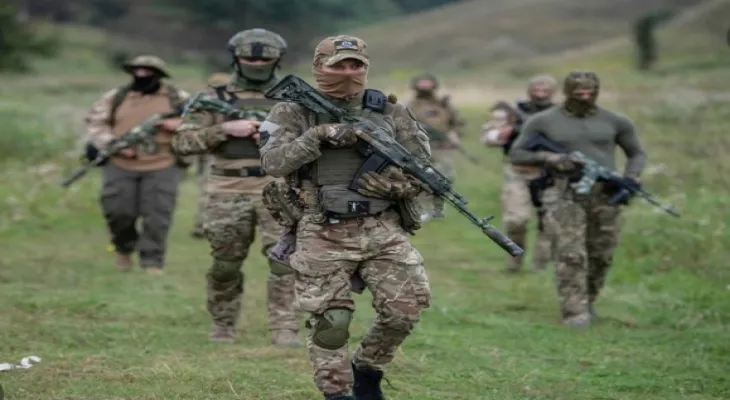Search here
Newspaper
Search here

Arab Canada News
News

Published: September 11, 2022
On the 200th day of the war in Ukraine on Sunday, the country recaptured large areas of the south and east in a long-awaited counteroffensive, delivering a strong blow to Russia.
The counteroffensive began in the final days of August, initially focusing on the southern Kherson region, which Russian forces had overrun in the early days of the invasion. But once Moscow redirected attention and forces there, Ukraine launched another highly effective attack in the northeast, near Kharkiv.
Facing the possibility of a large group of its forces being encircled, Moscow withdrew its troops from Kharkiv in a dramatic turnaround in the state of play, marking the Kremlin's biggest challenge since launching the invasion on February 24. Mykola Sunegurovsky, a military expert at Razumkov, said, "The Ukrainian army exploited the transfer of the majority of Russian forces to the south and is trying to steer the course of the war, excelling in maneuvering and showing great skill."
Ukrainian President Volodymyr Zelensky also praised the army in a video speech on Saturday evening, saying it had reclaimed about 2,000 square kilometers of territory so far this month. He also mocked Moscow over its retreat, saying the Russian army "is showing its best - showing its back."
The Russian military disaster sparked anger among Russian military bloggers and nationalist commentators, who criticized the Kremlin for failing to mobilize more forces and take stronger action against Ukraine. Even Ramzan Kadyrov, the Moscow-backed leader of the Russian Chechen region, openly criticized the Russian Defense Ministry for what he described as "mistakes" that made the Ukrainian lightning attack possible.
Both sides suffered heavy losses in the largest conflict in Europe since World War II. The commander of the Ukrainian army said last month that nearly nine thousand of its soldiers had been killed in fighting. While Moscow has not reported losses since March, Western estimates indicate the death toll reaches 25,000, with the wounded, prisoners, and deserters raising total Russian losses to more than 80,000.
Ukraine sought to mobilize the population to reach an active army of one million people, while Russia, by contrast, continued to rely on a limited group of volunteers for fear that mass mobilization would fuel discontent and disturb internal stability. As the war continues, the increasing flow of Western weapons during the summer plays a key role in the counteroffensive, significantly helping Ukraine enhance its ability for precise strikes. Ukraine said that since the start of the counteroffensive, its forces retook more than 30 settlements in the Kharkiv region. In the Kherson region, forces sought to drive Russian troops from their foothold on the west bank of the Dnipro River, a potential landmark for Moscow's deep incursion into Ukraine.
The city of Kherson, an economic center at the confluence of the Dnipro River and the Black Sea, which had a population of about 300,000 before the war, was the first major population center to fall in the war. Russian forces also stormed the Zaporizhia region in the far north, where they seized the largest nuclear power plant in Europe. The last of its six reactors was shut down on Sunday after running in a risky "island mode" for several days to generate electricity for the plant's vital cooling systems after restoring one power line.
Moscow had established puppet administrations in the occupied regions, introduced its currency, distributed Russian passports, and prepared for local public referendums to pave the way for annexation. But the counteroffensive disrupted these plans, with a senior Moscow-backed official in Kherson saying the vote should be postponed.
The counteroffensive came after systematic strikes on Russian infrastructure and supply lines, where Ukrainian forces used the US-supplied HIMARS multiple rocket launchers to bomb the two bridges on the Dnipro River, forcing Russian forces in the Kherson region to rely on floating crossings which also faced daily strikes.
Last month, a series of explosions also struck airbases and an ammunition depot in the Crimean Peninsula, confirming the vulnerability of the peninsula that Russia annexed in 2014 and which was crucial to its southern operations. Ukrainian authorities initially refrained from claiming responsibility, but the country’s army commander, General Valeriy Zaluzhnyi, recently acknowledged that his forces hit them with missiles.
Comments